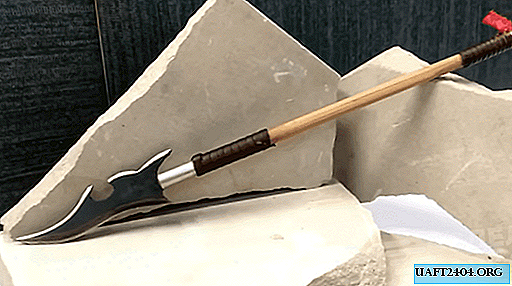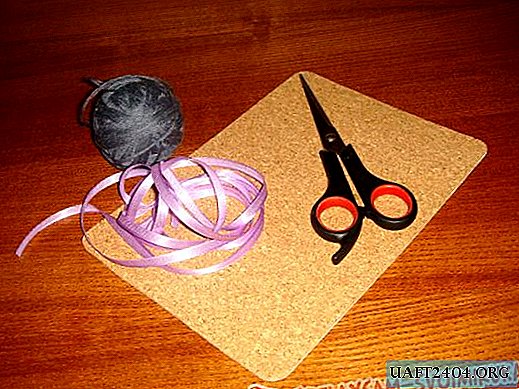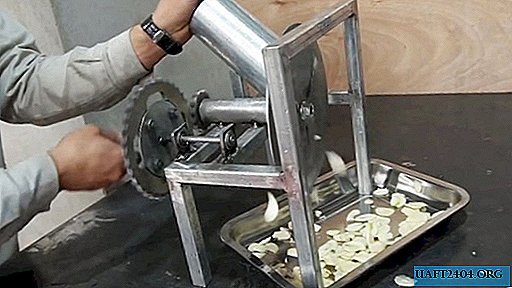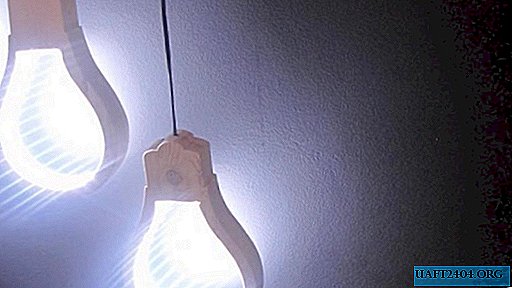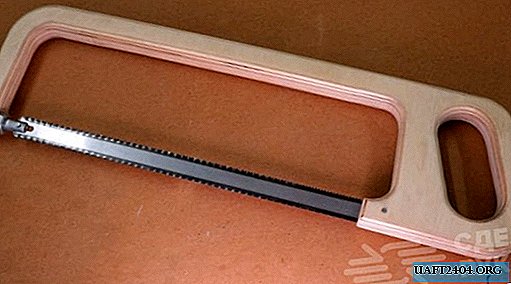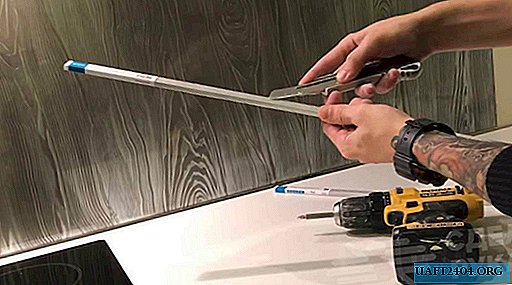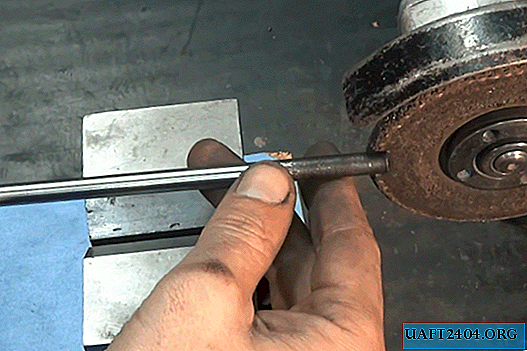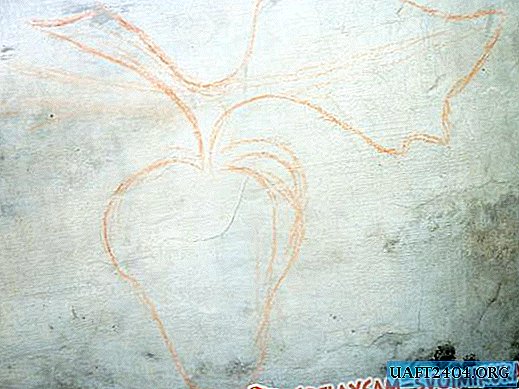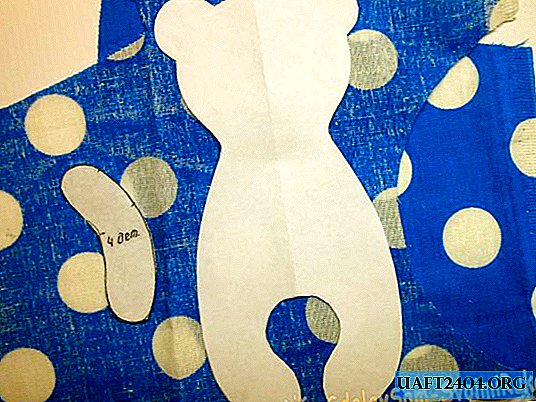Share
Pin
Tweet
Send
Share
Send
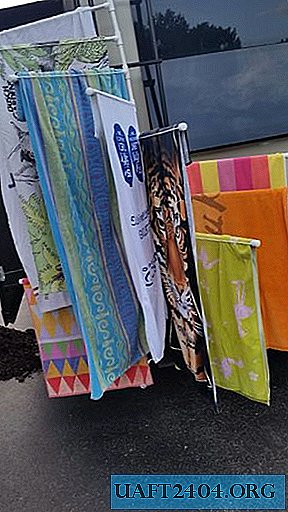


Make a portable clothes dryer that is mounted on the stairs of the motorhome and has many undeniable advantages:
1. She is very durable and takes up little space, and you can hang a lot of clothes on it, especially using hangers and clothespins. There are even small hooks at the bottom of the dryer to hang shoes or small items.
2. It is lightweight, and when disassembled, it is convenient to store and transport.
3. You can adjust the horizontal slats so that they do not block the window or door and do not hang in the wind.
4. "Inconvenient" things can be hung between others, hiding them from prying eyes.
Let's get started!
Materials purchase


To make such a dryer, you will need:
- 7 PVC bends.
- 10 PVC tees.
- 12 PVC caps.
- 3 PVC pipes of 3 meters.
- 15 meters of linen (uncoated) or other non-tearing rope.
- 9 aluminum screws.
- Acetone.
- Sponge with steel thread.
- Glue for PVC.
- Drill for drill 22 mm.
Erase marking with PVC parts
This can be done with acetone and steel wool. If the labeling does not bother you, you can skip this step.
Making horizontal slats for underwear
Cut 2 three-meter PVC pipes into 4 parts, each 75 cm long. Cut another 75 cm long piece from the third pipe. You will get 9 slats for hanging clothes. Parts of the vertical support will be cut from the remainder of the pipe. This should be enough, but it’s best to measure the ladder onto which you plan to mount the dryer, and only then cut the parts.
Make the lower support



Measure the width of the stairs and cut two short sections, which will be located behind the stairs and connected by a tee. Please note that the PVC pipes are included in the mount approximately 2 cm.
Cut two identical pieces to make “hooks” that will protrude forward.
Finally, cut two short sections of 3 cm to put the caps on the ends of the “hooks”. Keep in mind that these parts are very small and will not be visible under the plugs.
In total, the lower support consists of five bends, two plugs, one tee and six short pieces of PVC pipe. Glue all the parts as shown in the photo.
Make a top mount and a vertical base


Cut one short piece of pipe along the width of the step, on both sides of which the bends will be located (note that PVC pipes enter the joints by about 2 cm).
Cut a small piece of pipe again to fit the plug on the bend.
Glue the two bends, the pipe pieces and the plug: you get a “hook” to hook the ladder to the step above.
Install the upper hook and the lower base on the ladder and cut the remainder of the PVC pipe to form a vertical post connecting them.
Glue the vertical part to the top so that it is more convenient to hang the dryer on the stairs and store the entire structure. The bottom base should not be glued to the vertical post.
Drill the remaining tees


Drill the remaining 9 PVC tees to remove the internal clips so that they slide freely along the vertical section.
Using a drill, make a semicircular cutout at the bottom of each tee. This hole will align with the screw screwed into the vertical base to secure the tee in position.
Assembly of vertical slats






In each of the nine slats, drill a through hole at one end and a slot at the other (in the same plane).
Starting from the inside of the bar, pass a piece of clothesline through the slot, then along the pipe, through the hole on the other side, again along the pipe, through the slot on the other side and pull the ends out so that they stick out of the pipe (to make these operations easier, you can attach the rope to the plastic tube).
Tie up two strong flat knots, tightening as tight as possible, then cut the excess rope and tuck the ends into the pipe. Making it easier with someone else's help.
Glue the caps on the ends where the holes are located, and the drilled tees on the other side. Align the tee so that the rope runs from the front and back of the vertical bar when the entire structure is assembled, as shown in the photo.
Assemble and align the vertical bars



Hang the vertical part on the stairs and put on it all nine finished vertical slats. From below install a horizontal basis.
Move the tees so that they are evenly distributed on the vertical column at the same distance from each other, then rotate them so that the horizontal bars are deployed as you like. Keep in mind that things will hang down and should not interfere with the fact that they are located on the lower slats, or block the window.
When you position the tees as you like, drill a small hole where the semicircular notch on each tee is located, and insert the aluminum screws. The screw will fix the bar in the desired position and prevent the wind from swinging it. But you can change the position of the bar by slightly moving the tee up and turning it around.
It is more convenient to store the dryer in a flat form, for this just slide the strips up and install in the same plane along with the upper hook.
Use your creation!






Assemble the structure completely and hang everything you need to dry!
If you fasten large things, for example, towels, under a clothesline, it will hold them in place in a straightened form.
Smaller things are best secured with clothespins.
Some things are better to dry on the shoulders, and the plugs at the ends of the pipes will not let them slip.
If you want to dry something imperceptibly, hang this item on a rope between two towels.
Use the bottom hooks for wet shoes or small items.
Enjoy a compact and convenient dryer that can hold as many as nine towels at a time!
Original article in English
Share
Pin
Tweet
Send
Share
Send

